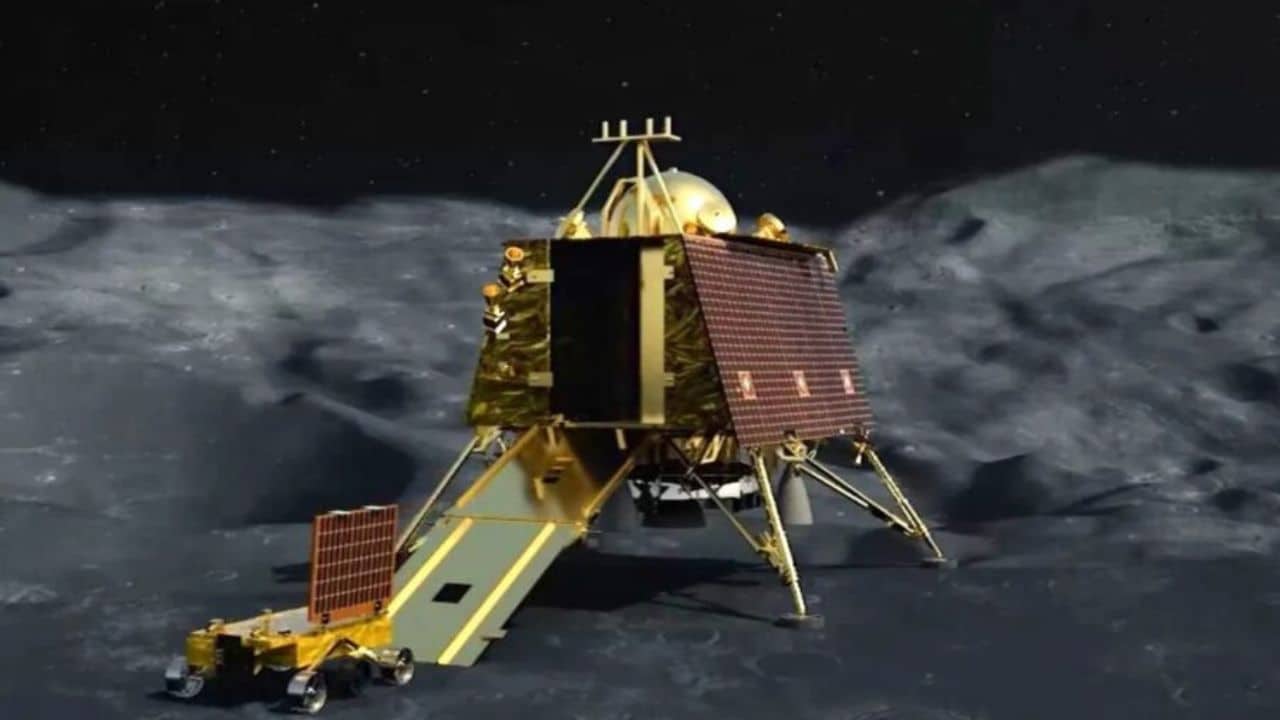ISRO has unveiled the intricate landing procedure for the Vikram Lander module of Chandrayaan-3, showcasing its daring attempt to achieve a soft landing on the Moon’s south pole. This endeavor is especially challenging due to the difficulty of landing softly on the lunar surface, particularly around its poles.
Scheduled for August 23, the last 15 minutes of the landing sequence are pivotal. During this window, the lander faces the tricky task of transitioning from a horizontal flight at high speeds to a vertical orientation, setting the stage for a gentle descent onto the Moon.
This 15-minute period is crucial to the mission’s success. In a past attempt in July 2019 for the Chandrayaan-2 mission, the Indian Space Research Organisation (ISRO) had to cancel due to challenges encountered during this phase, which was dubbed “15 minutes of terror.”
ISRO Chairman S Somanath recently shared insights into the upcoming landing. The lander begins the process nearly horizontal, around 90 degrees from the vertical landing position it needs. The challenge lies in smoothly maneuvering the lander into the vertical position, a feat that requires meticulous calculations and algorithmic precision to conserve fuel and ensure accurate distance calculations.
Here’s a breakdown of the landing procedure:
Rough Braking Phase: The lander starts at a high horizontal speed of 6048 km/h. The primary goal is to reduce this speed to 1,290 km/h horizontally and 61 m/s (approximately 220 km/h) vertically. This phase, known as the “rough braking phase,” should last around 690 seconds, during which the lander descends from 30 kilometers to 7.42 km above the lunar surface, covering a distance of about 713.5 km.
Attitude Hold Phase: As the lander reaches 7.42 km altitude, it enters the “attitude hold phase” for about 10 seconds. In this phase, the lander shifts its orientation from horizontal to vertical while moving about 3.48 kilometers across the lunar surface. Altitude drops to 6.8 km, with horizontal and vertical speeds at 336 m/s and 59 m/s, respectively.
Fine Braking Phase: The “fine braking phase” lasts about 175 seconds, wherein the lander completes its transition to a vertical position. It covers the final 28.52 km to the landing site, reaching an altitude of around 800-1,000 meters. Ideally, the lander’s speed drops to 0 m/s for a calm landing.
Learnings from Chandrayaan-2’s failure have been instrumental in refining Chandrayaan-3’s approach. The key improvement lies in managing the critical transition between the “attitude hold phase” and the “fine braking phase.” In case sensors or systems fail, the lander, if its propulsion system remains functional, is designed to attempt a landing. This robust design ensures a degree of resilience to handle contingencies.
Despite the intricate planning, the landing will have a significant impact. The Vikram Lander will touch down at a speed of 3 meters per second (about 10.8 km/h), equivalent to a safe speed for instrument preservation. However, this speed is sufficiently forceful that if a human were subjected to it, their bones would be crushed. The module’s combined mass of over 2000 kgs, even on the Moon, emphasizes the need for a controlled landing. The lander can handle a tilt of up to 12 degrees during landing, adding an extra layer of security to accommodate potential variability.
In sum, ISRO’s Chandrayaan-3 mission aims to master the complex procedure of executing a soft landing on the Moon’s south pole. With improvements based on Chandrayaan-2’s experiences, the mission is poised to make history, but the challenges and risks remain formidable.






































